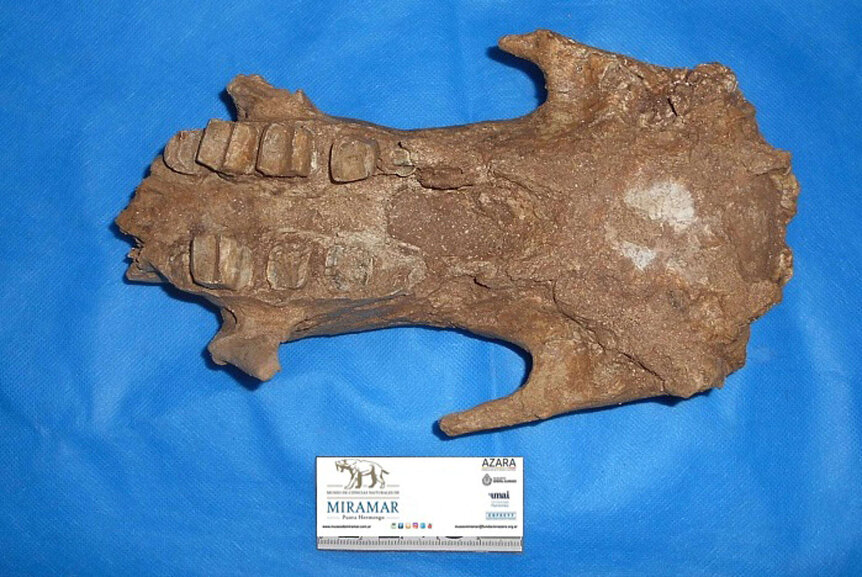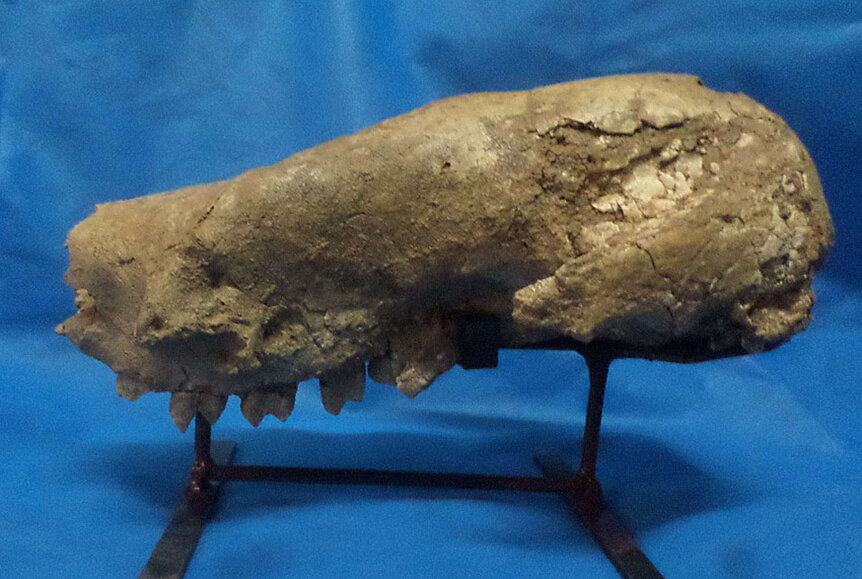Create a free profile to get unlimited access to exclusive videos, sweepstakes, and more!
South American scientists unearth skull of ancient 12-foot-tall ground sloth

In a rare skull find dating back approximately 3.58 million years ago, paleontologists in Argentina have unearthed what they consider is one of the oldest-known fossils of the extinct mega ground sloth named Megatherium americanum.
Meaning "great beast from America," the first specimen of these colossal mammals was discovered in 1787 by Manuel Torres on the banks of the Luján River in eastern Argentina. It was eventually shipped to Madrid's Museo Nacional de Ciencias in Madrid, where its original skeleton is still on display for the public.
Giant Ice Age ground sloths once roamed the wilds of the prehistoric Americas and are decendants of the much smaller tree sloths of the modern era. One of the larger of these slow-moving ground sloths, Megalonyx jeffersonii ("Great claw"), reached nearly 10 feet in height and would intimidate any ancient human hunter.
Megatherium is just one of a number of giant ground sloths species that thrived in South America from the Early Pliocene epoch 5 million years ago through the end of the Pleistocene epoch some 11,700 years ago. Scientists have determined that the earliest and tiniest known species of the genus is Megatherium altiplanicum from Bolivia's Pliocene epoch.
These gentle clawed herbivores first appeared in South America approximately 35 million years ago and perished with most massive Ice Age mammals like mastodons, wooly rhinos, dire wolves, saber-toothed tigers, and cave lions.
“Megatherium remains are very common in almost the entire Argentine territory, however, it is the first time that the remains of such high antiquity have been found, which is only comparable to a find made a few years ago in Bolivia,” lead study author Dr. Nicolás Chimento from the Museo Argentino de Ciencias Naturales and his colleagues announced.
Details of their discovery were presented to the online publication, Journal of South American Earth Sciences.
It's the enormous Megatherium americanum, nearly the size of today's bull elephants, that was the true king of the giant sloths. A native to Argentina, Uruguay, and Bolivia during the Pleistocene, its mass was 10-times the size of today's sloths and tipped the scales at anywhere from 3-4 tons. Fully adept at standing and walking on its hind legs with a maximum height of 12-13 feet tall, it was by far the largest bipedal mammal that ever lived.
This new, perfectly preserved partial skull of a Megatherium was found in the vicinity of San Eduardo del Mar in Argentina’s Buenos Aires province and belonged to a large juvenile.
“This constitutes the first undoubted record of Megatherium from the Pliocene of Argentina, and one of the oldest records for the genus,” the researchers revealed. “This finding blurs previous biogeographical proposals sustaining that the genus originated in the High Andes and later dispersed to the lowlands.
"On the contrary, present finding, together with the record of coeval Megatherium species in the Pleistocene of the Argentine Pampas, suggests a more complex paleobiogeographical scenario and indicates that the diversity of lowland Pliocene megatheriines is still underrepresented.”





























